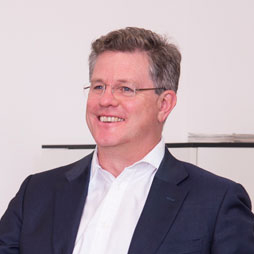It will not come as a surprise that PER is working hard to identify high-potential women who might wish to come into the private equity industry. Our client base is pushing hard to balance gender better across their teams and urging us to deliver.

There are many challenges to this, ranging from the low absolute number of women currently in the traditional training grounds; to a much-noted caution on the part of female candidates to put themselves forward; to them feeling almost overwhelmed by the sheer number of inbound approaches as well as many women declining to commit to female-only processes for fear of being seen as token hires, and also significantly to the way some firms continue to present themselves and their recruiting processes.
As always, certain funds are getting better results. Particularly those who started this process earlier and can demonstrate a number of successful female hires who act as mentors and role models. Firms that recognise the need to ‘sell’ as much as to ‘buy’ when recruiting have more success in attracting female applicants. Selling, especially but not exclusively, to female candidates involves pitching the firm’s identity, culture and values alongside the role and development path. It’s also helpful to build in the opportunity for informal contact during the process, helping to build trust and confidence.
As always, certain funds are getting better results. Particularly those who started this process earlier and can demonstrate a number of successful female hires who act as mentors and role models. Firms that recognise the need to ‘sell’ as much as to ‘buy’ when recruiting have more success in attracting female applicants. Selling, especially but not exclusively, to female candidates involves pitching the firm’s identity, culture and values alongside the role and development path. It’s also helpful to build in the opportunity for informal contact during the process, helping to build trust and confidence.

Under pressure from their partners and perhaps also from LPs, hiring managers want results quickly, but this is not always going to be possible. Just on one crude level, the current level of demand for female Associates almost outstrips what we believe to be the number of available people, so someone is mathematically bound to miss out. This isn’t to reject the reasons why diversity matters, and we remain committed to helping clients achieve their goals, but there has to be a more creative, more patient solution than the current feeding frenzy.
One of the most promising routes to success is the intern programme, which many firms are already using as a chance to build a medium-term pipeline and get real-time due diligence on candidates. The two drawbacks to this are the need to invest time in training individuals rather than having a new plug & play asset, and that it is a medium to long-term solution rather than an overnight fix.
We increasingly believe that firms have to accept the need to train more than in the past. Organisations are more structured and institutionalised than in the past and assuming responsibility for developing junior skills on the job needs to be seen as a milestone for mid-level promotions. Regarding timelines, the very fact that these programmes deliver long-term results makes it all the more important to put them in place immediately; by all means continue to prioritise short-term targets as well – they are not exclusive. This is a structural problem that has built up over decades and will take time to address fully, so we need to have long as well as short-term plans.
One of the most promising routes to success is the intern programme, which many firms are already using as a chance to build a medium-term pipeline and get real-time due diligence on candidates. The two drawbacks to this are the need to invest time in training individuals rather than having a new plug & play asset, and that it is a medium to long-term solution rather than an overnight fix.
We increasingly believe that firms have to accept the need to train more than in the past. Organisations are more structured and institutionalised than in the past and assuming responsibility for developing junior skills on the job needs to be seen as a milestone for mid-level promotions. Regarding timelines, the very fact that these programmes deliver long-term results makes it all the more important to put them in place immediately; by all means continue to prioritise short-term targets as well – they are not exclusive. This is a structural problem that has built up over decades and will take time to address fully, so we need to have long as well as short-term plans.
Widening the talent beyond traditional bankers, consultants and big 4 trainees, and indeed beyond the magic circle of traditional universities and degree courses also offer hope. Again, this requires a more creative mindset from the employer and most likely the commitment to train people more intensively. This is not about compromising on talent. The objective is to hire for potential more than for narrow experience – pick for brains and motivation and back-fill any missing hard skills. As examples, we have seen many engineers move successfully into investment roles, several with humanities degrees, as well as a surprising number of qualified medics. What they may lack in recent CV credits, they more than make up for in sheer brainpower and drive.
We should also be considering what diversity really means. The gender balance is only one part of the picture. We are now seeing requests to include more entry-level candidates from financially challenged backgrounds who may not have had the education and training opportunities enjoyed by others. Here again, is the challenge to spot raw talent and potential and commit time to train and develop it.
Diversity of ethnicity is perhaps an even bigger upside than that of gender. Just one specific example is creating opportunities for those with refugee or migration backgrounds. Language skills present specific hurdles, but can these be overcome? There are further topics around people with physical disabilities who are barely represented in this whole industry but will have brains and perspectives to offer (arguably highly insightful ones). We are also wrestling with the whole theme of sexuality which is proving to be a very tricky one to address in screening interviews and prioritisation: should one even be asking about these areas, are they relevant? We don’t yet have an answer other than to assert that they should not be any sort of reasons for someone not to make a successful career in private equity or venture capital.
Taking a long-term perspective on diversity and inclusion requires senior buy-in and significant investments of time and resources, which may seem like the wrong approach when LPs are eager for immediate results. However, like all solutions to structural problems, it’s necessary to work from the ground up. We’ve seen patience pay off for firms who laid the groundwork for diversity early and it’s never too late to make a start on the future of your business.
We should also be considering what diversity really means. The gender balance is only one part of the picture. We are now seeing requests to include more entry-level candidates from financially challenged backgrounds who may not have had the education and training opportunities enjoyed by others. Here again, is the challenge to spot raw talent and potential and commit time to train and develop it.
Diversity of ethnicity is perhaps an even bigger upside than that of gender. Just one specific example is creating opportunities for those with refugee or migration backgrounds. Language skills present specific hurdles, but can these be overcome? There are further topics around people with physical disabilities who are barely represented in this whole industry but will have brains and perspectives to offer (arguably highly insightful ones). We are also wrestling with the whole theme of sexuality which is proving to be a very tricky one to address in screening interviews and prioritisation: should one even be asking about these areas, are they relevant? We don’t yet have an answer other than to assert that they should not be any sort of reasons for someone not to make a successful career in private equity or venture capital.
Taking a long-term perspective on diversity and inclusion requires senior buy-in and significant investments of time and resources, which may seem like the wrong approach when LPs are eager for immediate results. However, like all solutions to structural problems, it’s necessary to work from the ground up. We’ve seen patience pay off for firms who laid the groundwork for diversity early and it’s never too late to make a start on the future of your business.

AUTHOR
Rupert Bell
Director of DACH
Rupert Bell
Director of DACH